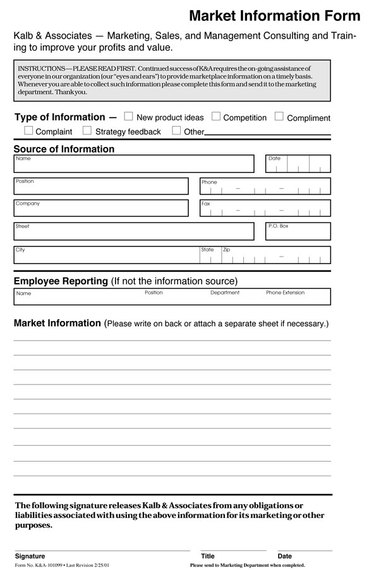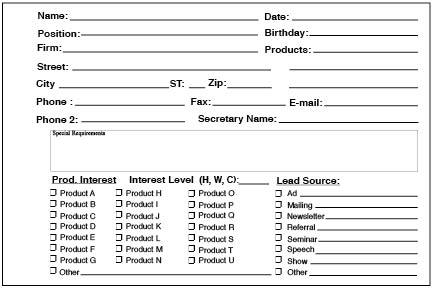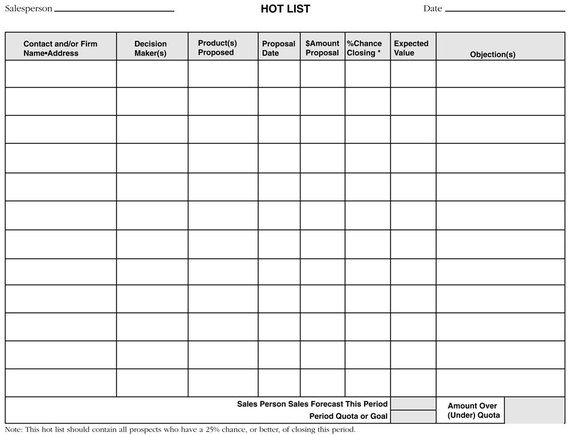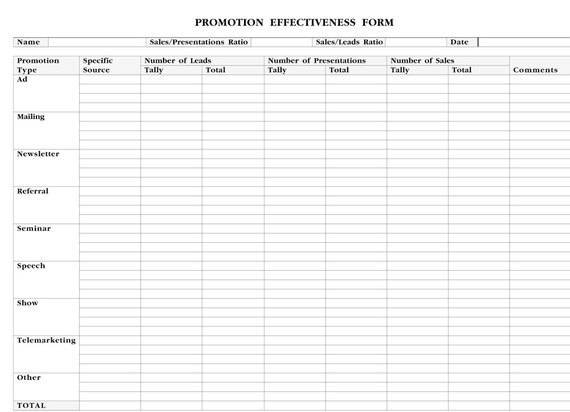For many years, businesses have been talking about the need to develop systems to tie every aspect of marketing together from developing marketing communications through recording sales and providing after-sale customer service.
The problem is that very few have invested the time and money to develop such systems.
Yes, there are bits and pieces here and there from social media analytics to CRM systems, but very few of these components are integrated to the extent they need to be. How do we know? The proof is abundant.
Evidence of inadequate Marketing Information Systems
In addition to not seeing them in companies that I have studied and for which I have consulted, it is obvious from the ads and commercials that most companies run in the media. When is the last time you saw an ad or commercial that has a built in mechanism, or code, for the advertiser to track the success of the ad?
Over many years, my students at USC continuously analyze ads and commercials of companies as part of their homework assignments. As they have discovered, too many ads in various media (print, broadcast, and even online) have no such mechanisms.
Further evidence is provided in marketing industry publications that complain about the lack of specific cradle-to-grave information that ties together marketing efforts with sales and profit results. CEOs of major companies complain about the lack of definitive data all the time. The ultimate evidence is that marketing budgets are slashed in economic downturns. If CEOs and other executives believed that marketing worked efficiently and effectively, they would not look at marketing as a cost item but an investment on which they would realize a return.
Downturns should prompt marketing increases not cuts. Furthermore, there are so many articles that talk about CMOs losing credibility. The primary way a CMO can prove his or her worth is to collect the data on the return the company is realizing on its marketing investment. To do that, a comprehensive marketing information system is required.
How to create a comprehensive MIS in a "perfect" world
In a perfect world, an MIS system would be created from the ground up and integrated with all of a business's systems and processes. In such a world, every sale and lead could be traced back to the marketing effort that produced it. Also, every complaint or compliment would be tracked to the source. Skilled customer service personnel would quickly turn all negatives into positives, and skilled marketing communicators would create content that incorporated the testimonials. That's the dream. The reality falls far short. What is a marketer to do?
Creating a real-world MIS for those that cannot afford to wait
Rather than wait for the dream to materialize, marketers need to improvise. They need a system that enables them to (1) make better decisions and (2) support those decisions with verifiable data. The initial steps of this approach typically involve the following:
- Look at what systems the company already has in place,
- Determine what useful marketing information can be gleaned from those systems,
- Identify the information marketers need that they are not getting from existing systems,
- Integrate these systems with company wide enterprise systems (if possible and not too costly).
Start with the accounting system
- Sales
- Costs/Expenses
- Profits
If the accounting software is well designed and flexible, this information can be sorted in a variety of ways including by (1) Sales person, (2) Product, (3) SKU (stock-keeping-unit), (4) Division or Region, (5) Distribution channel, (6) Reseller, and (7) Season.
- Marketing strategy feedback (or how well marketing strategies are working)
- Complaints
- Compliments (testimonials)
- New Product ideas
- Competition information
- Marketplace changes
To capture and properly respond to this information, most marketers need to create a Marketing Information System that augments the macro information provided by their accounting systems.
Market Information Form
- Complaints. Once collected, complaints are distributed to those that can solve the problem quickly. The objective is to turn the negative into a positive and build a stronger relationship with the offended party. The way companies handle complaints can mean the difference between success and failure in an increasingly competitive marketplace.
- Compliments. After obtaining permission, marketers use compliments in their marketing communications. Nothing is more effective than bona fide testimonials from customers. Copies are also given to sales people so they can put them in their sales notebooks and use them to impress prospects and close business.
- New Product ideas. These are fed into the company's new product development system.
- Competition Information. This is given to sales people to put in their sales notebooks so they can use the data to answer objections and close business (with the caveat of not disparaging competitors) and is fed into the company's new product development system so that new products can be designed to beat competitors.
- Strategy feedback. This information is organized by the marketing building blocks (1) corporate image, (2) positioning, (3) product, (4) pricing, (5) distribution, (6) promotion, and (6) marketing information system (yes we need to collect information as to how well our MIS strategies are working). Based on feedback, strategies are adjusted as necessary.
A pad of these forms (or an electronic version) is provided to all the contact points including (1) Receptionists and secretaries that answer the phone, (2) Sales people, (3) Customer service people, (4) Repair people, (5) Personnel that respond to inquiries and complaints online and on social media, and (6) accounts receivable (since they often hear about complaints when they try to collect on late invoices).
Lead Card
- Identification of the prospect. If you are selling to a business, most of the information you need is on your contact's business card. For additional information you need, your lead card should be designed so you can add it with minimal effort.
- Product interest. The products you typically sell should be pre-listed on the lead card so sales people can quickly check them off.
- Degree of interest. This is your sales person's guestimate of how likely the prospect is to buy your product in the current period, which is usually this month. Because the degree of interest is also called "buying temperature" the metaphor for degree of interest that is often is used is Hot for the most interested leads, Warm for the next most interested leads, and Cool for the least interested. The "Hot" leads should automatically update another MIS report called the Hot List.
- Lead source. All promotion that you do should have a unique code so that when the lead is captured, you know what marketing activity generated the lead. This lead source should automatically update another MIS report called the Promotion Effectiveness report.
In addition to helping sales people follow up on leads and close business, smart marketers use lead card information for other Marketing Information System purposes, such as the Hot List and Promotion Effectiveness Report described below.
Hot List
As illustrated above, a Hot List contains the following information on "Hot" leads:
Prospect name. This could be a business or individual.
Decision makers. This is so the sales person does not waste time talking with the wrong person.
Product or project proposed. This is what the prospect wants.
Proposal date. This is the date the product proposal and estimate of the cost is given to the prospect.
Dollar-amount proposed. This is the price of the product proposed.
Chance of closing in the current period. To qualify for the Hot List, a Hot lead should have at least a 25% chance of closing in the current period (each company should decide their own minimum threshold for Hot).
Expected Value (5 multiplied by 6). If the dollar amount proposed is10,000 and the % chance of closing is "guestimated" to be 50%, the expected value would be $5,000.
Objections. This lists the objections that are keeping the prospect from buying.
- Help close sales. The sales manager helps sales people to close Hot leads by coaching them on how best to answer the Objections in column 8 of the Hot List.
- Dynamic sales forecast. The sales manager helps to insure that the sum of Expected Values equals, or exceeds, each sales person's quota for the month. If the expected values are lower than a sales person's quota, the sales manager can encourage the sales person do whatever is necessary to get more Hot leads on the Hot List so that the sum of Expected Values equals or exceeds the quota. The sales quotas of all the sales people should sum to the "measurable goal" of the Marketing Plan.
Promotion Effectiveness Report
As each sales person captures the promotion source for each lead on the Lead Card, the information automatically flows onto his or her Promotion Effectiveness Report similar to the example above. Every time a sales person gives a presentation or makes a sale from a lead, that information is recorded on the Promotion Effectiveness Report. The MIS system automatically adds up the total number of the leads, presentations, and sales company-wide for each promotion source.
When compared to the costs of that promotion source, the marketing department can calculate the promotion effectiveness, or ROI, of each promotion. Since totals for leads, presentations, and sales are available in the MIS by sales person, the sales manager can automatically compute the batting average of each sales person and determine the number of leads and presentations each one needs to make his or her sales quota. In this way, the sales manager and the company marketers systematically work together to insure that (1) plan goals are met and (2) the money invested in promotion is not wasted (the ads and promotions that are effective will be repeated and the ones that aren't will be discontinued).
Market Research
The systems above (Market Information Form, Lead Card, Hot List and Promotion Effectiveness Report) typically capture information in real time and provide a lot of great information that help the marketing function do a more effective job and prove it to the CEO. Even so, this is not enough. There are still holes in the information marketers need. In an effort to plug these holes, there is one big missing piece - Market Research. There are two big categories of Market Research - Secondary and Primary.
Secondary Research
Secondary research is simply research done by others. Perhaps the greatest invention for secondary research is the search engine. Marketers can simply type in search terms in a search window and browse the Internet for any data related to those search terms. Furthermore, marketers can set up "alerts." That is, search terms can be entered into a search engine so that the search engine's crawlers will continually search for anything that contains those search terms and send you an email when it finds them. There are so many other sites, which marketers frequent, that provide a wealth of information. Just a few examples include: Media Post, Marketing Sherpa, Brand Channel, Hoovers, the CIA World Factbook, and ClickZ.
Primary Research
When some big holes remain that still need to be plugged, marketers will often do primary research, which is their own research. Common forms of primary research include surveys, focus groups, experiments, and various forms of crowd sourcing.
When have you done enough research?
Since you can always do more research, when have you done enough? Some academics believe you never do enough. Smart marketers and business people that understand cost/benefit analysis know you have done enough research when your answers converge (often called "converging data"). If they diverge, you typically need to do more.
You will never plug all the holes
Smart marketers also know that you will never plug all the holes in the information you would like to have. Why? The marketplace is constantly changing. Moreover, you do not need perfect information. If you are collecting the information discussed in this post, you will have the information you need to make better marketing decisions. The great thing about business is you do not have to be perfect. You just need to get sufficient information to stay ahead of your competitors and keep updated on your ever-changing marketplace. If you do that, you are likely to win more often than not. Best of luck.




